|
|
|
|
Article
|
|
Power supply - February 2005
|
Last revision on October 2016
|
|
|
Power supply in small current device - February 2005, by Eric Juaneda
It's common to find on ingenious design great inventions on linear stage and total
conformism in design's power supply! When you listen to an electronic device, you hear the sound
of its power supply too. It's certainly as important as a good linear stage.
A - The power transformer’s size
Try this first experience: take a small current device (solid state or valve) as preamplifier, dac,
phono stage...
Listen it (I guess the original transformer is a 50VA).
Take the same device and change only the transformer by a 160VA. Listen it.
Now, you can change the transformer by a 300VA and listen.
Step by step with this experience, the sound's quality increase. Indeed the sound is less metallic, more natural,
your amplifier seems to be powerful and low frequencies are more present... Why do devices which need only 10W,
sound better with a 300VA transformer than a 50VA transformer?
By increasing the transformer's size, some things change:
The inductor is a tank of energy,
It works easily and faster.
Circuit with a bigger transformer gets better sound than the same device with a small transformer.
Historically, the valve design have often bigger transformer than solid state device, because of the power
used by the tube’s heating.
B - Filtering capacitor
Some designer think more you have capacitors in your power supply, better will be the sound of your device.
I think LESS is better.
Examine filtered, unregulated power supply with two different capacitor values.
|
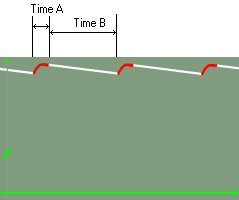 FIGURE 1 - high capacitor.
FIGURE 1 - high capacitor.
|
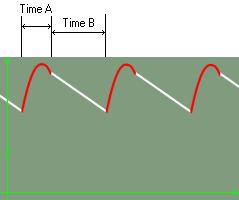 FIGURE 2 - small capacitor.
FIGURE 2 - small capacitor.
|
Time A - Charging capacitor, supply current come from the transformer.
Time B - Discarding capacitor, supply current come from the capacitor.
The time when your electronic device is directly supplied by the transformer (Time A) depends
on the capacitor's size. Larger this time is, better will be the sound. During the charge, big capacitors
pump more energy than small ones. Charging time capacitor is a waste of quality for audio circuit
(poor and metallic sound).
Have you ever tried to reduce the filtering capacitor, by changing your 1000µF with 100µF ?
In my "model 3 preamplifier" I only use 300µF. It sounds better than the 3000µF that I used on the
first prototype. (Sound is less metallic, medium is more natural, bass are faster and powerful,
space sonority is more coherent...)
Of course, noises in power supply increase (100Hz), the power regulator have to work hardly!
The ground become noisy and you can hear rumble in the audio signal. You have to balance between
better sound quality and rumble.
In the ideal power supply, you don’t need (or need less) power capacitor; the audio circuit is always supplied
by the transformer. You can reach that goal by using a three-phase current. Unfortunately,
you don’t find a three-phase plug in the listening room!
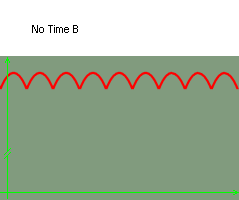
FIGURE 4 - Three-phase tension
One solution: the Shared Current Power Supply (SCPS)
The idea is to cut your supply in two: one supply for power capacitor, the other only for
audio circuit. The time during the circuit is powered directly by the transformer (Time A) might be as
large as possible.
|
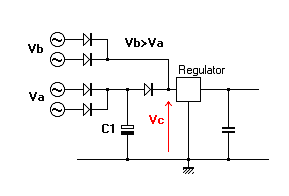 FIGURE 5 - Shared Current Power Supply
FIGURE 5 - Shared Current Power Supply
|
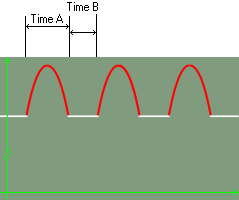 FIGURE 6 - SCPS Tension before regulator
FIGURE 6 - SCPS Tension before regulator
|
Va tension only charge capacitors. Vb tension only supplies audio circuit. Big capacitors have no negative effect.
Time A and Time B depend of Va and Vb, you can adjust the ratio between this tensions.
This power supply has a very good sound, but stills very noisy. Figure 5 is only
an applicative sample; you can reduce supply noises by adding regulator stages.
I currently use Shared Current Power Supply in my prototypes since 1989.
It's very good audio solution, but silent supply is difficult to obtain.
|
|



